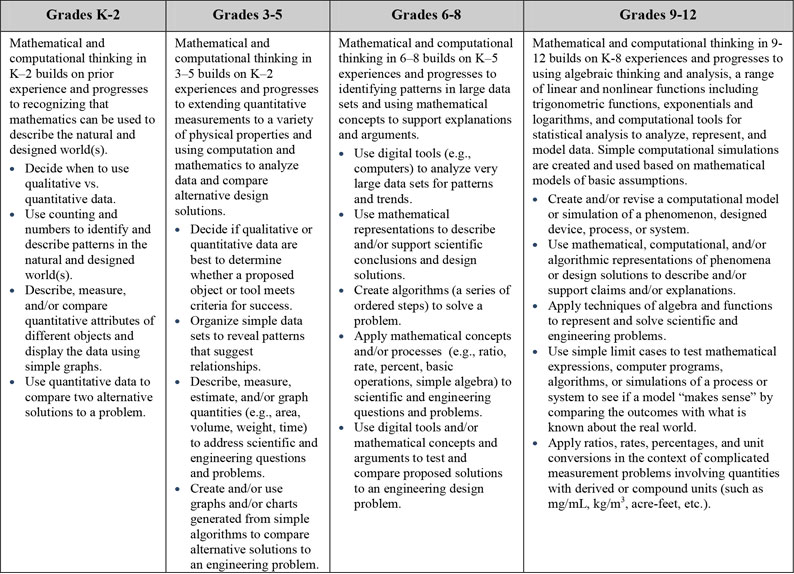Science
In science, mathematics and computation are fundamental tools used for understanding and representing physical variables and their relationships. These tools are used for a range of tasks, such as constructing simulations, analyzing data, and recognizing, expressing, and applying quantitative relationships. Mathematical and computational approaches enable predictions of the behavior of physical systems, along with the testing of such predictions. Moreover, statistical techniques are invaluable for assessing the significance of patterns or correlations.
Engineering
In engineering, mathematical and computational representations of established relationships and principles are an integral part of design. For example, structural engineers create mathematically-based analyses of designs to calculate whether they can stand up to the expected stresses of use, and if they can be completed within acceptable budgets. Moreover, design simulations provide an effective test bed for the development of designs and their improvement. (Framework, p. 51)
See A Framework for K-12 Science Education, 2012, p. 64 for the entire text for Practice 5: Using mathematics and computational thinking.
In the video below from BozemanScience.com, Paul Andersen explains how mathematics and computational thinking can be used by scientists to represent variables and by engineers to improve design. He starts by explaining how mathematics is at the root of all sciences.
Using Mathematics & Computational Thinking Progression through Gradebands:

Progression from NGSS Appendix F p. 10.
Activities
Four Conceptual Change Activities are included to help teachers and students Confront Beliefs:
- Using Mathematics Activity #1: A Helping of Pi
- Using Mathematics Activity #2: Pendulums are Mathematically Beautiful
- Using Computational Thinking Activity #1: Pendulum Simulation
- Using Computational Thinking Activity #2: Wind Power
Also refer to Student Work in the Practice for real-life examples of how MPRES teachers have applied this Practice.
The purpose of the activities is to engage learners in the Practice of Using Mathematics and Computational Thinking. The emphasis is NOT on the activity itself, but rather the conceptual change related to the practice. Consumers of the Toolkit are reminded to not get wrapped up in the activity, but rather continually reflect on the conceptual nature of the practice to gain deeper understanding.
Since the activities are NOT lesson plans, in some cases only a brief explanation of the activity has been provided. Professional development facilitators should encourage learners to direct their own investigations and only intervene as needed to redirect.
To facilitate conceptual change throughout each activity, you should consider the following questions. These questions are also repeated at key points in each activity to assist you.
Awareness Questions:
- From the background information, what new awareness do you have about the practice of mathematics and computational thinking?
- In a 3-Dimensional classroom, to whom do you think mathematics and computational thinking applies?
- What questions did the background raise for you?
Expose Belief Questions:
- What are your current beliefs about this practice?
- In what ways do you think you are using this practice?
- What challenges do you see to using this practice?
Debrief activities by focusing on the conceptual understanding of the practice using the following prompts.
Resolve Belief Questions:
- In what ways did this activity change your beliefs about using mathematics and computational thinking?
- How difficult was it to use mathematics and computational thinking?
- What clarity was brought to the use of mathematics and computational thinking through these activities?
Extend the Concept Questions:
- How do you currently help students to use mathematics and computational thinking in your classroom?
- Review and evaluate a recent lesson you taught. How effectively does it engage students in using mathematics and computational thinking?
Go Beyond Questions:
- Share lessons in which you could implement the practice of using mathematics and computational thinking.
- Ask a colleague to observe one of your lessons OR video yourself teaching and reflect on using mathematics and computational thinking.
- Use the EQuiP Rubric for Lessons & Units: Science (PDF format) to evaluate a recent science lesson you taught.


